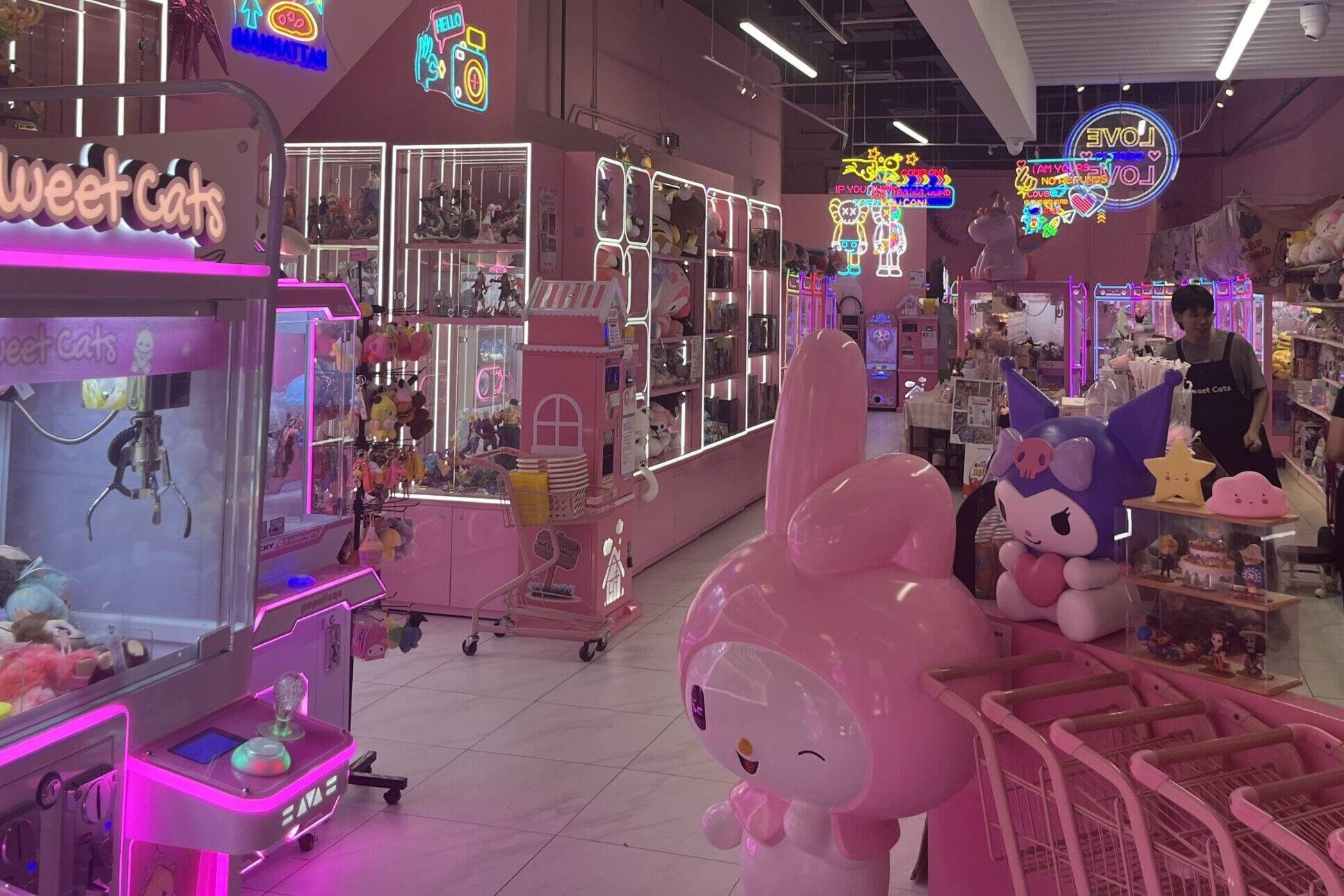Casual games are an excellent source of inspiration for interactive designers. Many video games are designed for dozens, or even hundreds of hours of play, and therefore do not provide an appropriate model of interactive design for location-based entertainment. Instead, we should look at casual games, which require little onboarding and are designed to feel intuitive.
I used to be lightly addicted to an app called Neko Atsume. I’d check it several times a day, every day, slowly working my way up to the big prizes, and finally caving and spending $5 on it. This blog post examines the elegant design of this simple collecting game. What can we learn from its design to inform interactive attractions?

Bring Guests Back
A previous post discusses how to encourage guests to return. Neko Atsume takes this farther by requiring players to close and reopen the app as part of the gameplay. In Neko Atsume, the player “collects” cats by enticing them to visit their yard. This is the core gameplay loop:
- Buy toys and food.
- Place toys and food in the yard.
- Close the app and wait.
- Reopen the app later to see the cats you’ve lured to your yard.
Every instance of gameplay is fairly short, because once the player has bought new things for the cats, there’s not much else to do. Each time the player leaves, they are motivated to return in order to see the payoff from their work. By training the player to reopen the app regularly, Neko Atsume builds a habit.
Many attractions want to create repeat audiences. This is the quickest and most reliable way: design the attraction so that returning has a clear payoff that cannot be acquired through any other means. Maybe returning can be a core part of the experience.
Build Long-Term Investment
When cats visit the yard, they leave gifts of fish (the in-game currency). Their gifts allow the player to continue to buy things for the cats. This is an elegant narrative: we give gifts to cats, and cats give gifts back. It perpetuates play, enriches the story, and makes players feel happy: it’s rewarding to receive gifts from cute cats.

The player’s fish reserve slowly grows over time, allowing the player to buy increasingly expensive and elaborate items for the cats. Some rare cats can only be enticed by specific, usually pricey items. Saving up for these items creates a long-term goal for the player, which encourages guests to continue to engage.
In Super Nintendo World at several Universal Studios theme parks, guests must defeat three “Key Challenges” in order to unlock the finale: the Bowser Jr. Shadow Showdown, a cooperative shadowplay game. Many guests do not accomplish this, because it requires a fair amount of investment. Universal made a bold move to gate one of the attractions in the park. It pays off: for guests who work for it, unlocking Bowser Jr. feels like a real accomplishment. There are plenty of other things to do, which satisfies casual guests, just as Neko Atsume satisfies casual players: food and toys always attract cats, but you can’t choose which ones.
Encourage Completionism (but don’t enforce it!)
Neko Atsume does not have a “win” state. The game never ends. For people who need a purpose, the game presents an album of all possible cats, with a record of the cats that the player has seen. If the game told players that they had to see all cats to win, players might have resented the difficulty of spotting certain rare cats. By presenting the album without instruction, Neko Atsume allows players to set the completion goal for themselves. The game encourages completionism without requiring it.

Gigantic Playground has taken a similar approach in some of our designs. We don’t want to punish guests who cannot regularly visit a theme park. At the same time, we want to reward fans for returning. In our apps, we usually show everything the guest can collect, providing hints about how to get them, and celebrate everything the guest has collected, along with points granted. Dedicated guests often seek to collect everything, but if they pursue that goal, it’s because they choose to.
Don’t Stress Over Cheating Guests
I was so dedicated to Neko Atsume that I ruined the game for myself: I spent real money to buy game currency (fish). Suddenly I could buy everything I wanted! Some of the elusive cats (Sapphire, Jeeves) came by while I was away, but I found that I didn’t really care. Because I didn’t work for it, luring cats no longer felt like an accomplishment.
By offering a shortcut, the game effectively breaks itself: it permits guests to skip the gameplay loop. From a financial perspective, the game succeeded: it got me to pay. And I’m glad it isn’t one of those manipulative games that continually wrings payments out of guests. But I no longer play Neko Atsume.
When implementing large public games, Gigantic Playground is extremely strict about protecting guest privacy. We do not, however, worry excessively about guests cheating to make their personal experience easier. As long as a guest’s antics do not disrupt the experience for anyone else, what difference does it make? Guests who cheat are only ruining the experience for themselves, just as I did when I used a mechanic external to the gameplay loop to accelerate my progress in Neko Atsume.
Conclusion
Each element of the gameplay in Neko Atsume serves multiple purposes:
- Buy toys and food.
- Mechanical: spend currency on inventory.
- Psychological: consider all the fun things you can get for cats.
- Place toys and food in the yard.
- Mechanical: use inventory.
- Psychological payoff: design a fun environment for cats.
- Close the app and wait.
- Mechanical: set up the reward.
- Bonus: because cat arrivals happen off-screen, the app does not need expensive animations!
- Psychological: build a habit of repeatedly opening the app.
- Mechanical: set up the reward.
- Reopen the app to see the cats you’ve lured to your yard, and the fish they’ve gifted you.
- Mechanical: acquire currency, restart gameplay loop.
- Psychological: receive gifts from cute cats.
This loop is easy to learn and contains no unnecessary elements.
Many location-based entertainment venues want our guests to start having fun right away. We want devoted guests and one-time visitors to enjoy themselves. Our desired timeline for experiential payoffs thus resembles that of casual games. Even though we exist in the physical world, we can learn a lot from the digital games we love.




